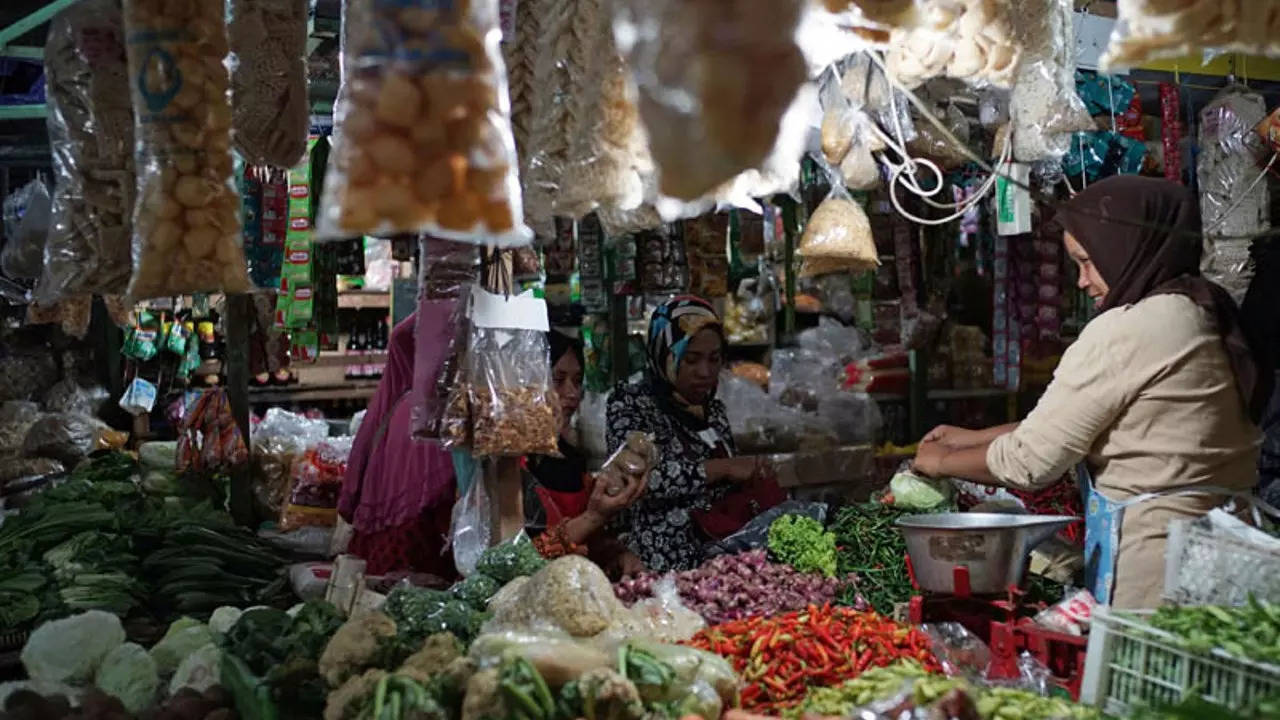
NEW DELHI: Retail inflation based on consumer price index (CPI) jumped to 8-year high of 7.79 per cent in April, data released by government showed on Thursday.
The previous high in the consumer price index (CPI)-based retail inflation was recorded at 8.33 per cent in May 2014.
Inflation numbers have now been above the upper limit of RBI's 2 per cent - 6 per cent tolerance band for 4 straight months.
The Reserve Bank of India (RBI) mainly factors in retail inflation while arriving at its bi-monthly policy.
Reserve Bank's monetary policy committee (MPC) has been tasked by the government to tame retail inflation based on consumer price index (CPI) at 4 per cent (+,-2 per cent).
In March, inflation had shot up to 6.95 per cent, a 17-month high, on the back of rising food prices.
Prices of key commodities soared
Rising food prices have emerged as an overriding worry for consumers - already hit hard during two years of the pandemic - as prices of edible oil and vegetables have surged amid fears of a fall in wheat output this year.
Inflation in the food basket -- which make up nearly half of the CPI -- rose to 8.38 per cent in April from 7.68 per cent in the preceding month and 1.96 per cent in the year-ago month, showed the data released by National Statistical Office (NSO) showed.
The rate of price rise in 'fuel and light' category in the retail inflation basket quickened to 10.80 per cent in April this year from 7.52 per cent in the preceding month.
In the 'oils and fats' category, inflation remained at an elevated level of 17.28 per cent (18.79 per cent in March 2022) during the month, as Ukraine is one of the major sunflower oil producers in the world and India imports a major portion of the commodity from the war-ravaged country.
Vegetables witnessed an inflation print of 15.41 per cent during the month as against 11.64 per cent in March, the data showed.
What led to this
Food inflation, which accounts for nearly half the consumer price index (CPI) basket, reached a multi-month high in April.
The ongoing Russia-Ukraine war, which has entered the 77th day, has disrupted global supply chains and further pushed commodity prices, especially for fuel and foodgrains, across the world.
All the major central banks are now forced to act, adding the focus the world over for the next 6-8 months would be to bring down inflation by killing whatever demand there is.
It has also caused a disruption in global supply chain, thereby pushing up prices of crude oil and other commodities. The spill over effect is now being felt by all economies of the world.
Inflation has peaked at a time when economies are trying to put behind the slump induced by the Covid pandemic and are gradually trying to increase the pace of growth.
Crude oil prices had mostly been on rise in March, after Russia started the invasion of Ukraine on February 24.
Oil companies in India had begun passing on the high import cost of global crude oil prices by hiking domestic petrol and diesel prices from March 22 -- after a four-and-half-month long hiatus.
Besides, a near 4 per cent rupee depreciation against dollar this year has also made imported items costlier.
What RBI has done so far
In an effort to tame the inflation, the Reserve Bank of India (RBI) raised the repo rate by 40 basis points (bps) to 4.40 per cent following a emergency meeting earlier this month. This was the first rate move in 2 years and its first hike in nearly 4 years.
In April MPC, RBI raised its inflation forecast for the current fiscal year to 5.7 per cent, 120 bps above its forecast in February, while cutting its economic growth forecast to 7.2 per cent for 2022-23 from 7.8 per cent.
The RBI will "certainly" raise the forecast again in June, as it did not want to do it in the off-cycle emergency meeting in May, said the source, who did not want to be identified as the discussions are private.
Rising food and energy prices are a global phenomenon and even several advanced nations have higher inflation rates than India, a recent report by RBI said.
It further added that the Reserve Bank of India has signalled its determination to combat inflation and that too will sustain macroeconomic stability and growth.
More rate hikes may follow
With RBI indicating that it will prioritise bringing inflation under control before economic growth, it is most likely to hike key policy rates in it MPC meetings.
"The inflation number will intensify pressure on the MPC to aggressively frontload policy rate hikes especially with no near-term respite seen on the supply side and geopolitical tensions. We expect another 90-110 basis point (bp) repo rate hike in CY2022, with 35-40 bps in June. We also expect additional 50 bp CRR hike in order to quickly streamline the monetary policy and liquidity stance," Suvodeep Rakshit, senior economist at Kotak Institutional Equities told news agency Reuters.
Aditi Nayar, chief economist at Icra said: "On the monetary policy front, we expect the RBI to hike repo rate by 35-40 bps along with 50 bps hike in CRR. In CY2022, from hereon, we expect repo rate hikes of 90-110 bps along with 50 bps of CRR hike. The RBI would aim to reduce liquidity along with reverting to above 5.15 per cent level of repo rate as soon as possible."
Despite inflation, India to be fastest growing economy
Even though inflationary pressures exist, the International Monetary Fund (IMF) has projected India to be the fastest growing economy in FY23.
"Among major countries, the World Economic Outlook projects India to be the fastest growing economy at 8.2 per cent in 2022-23," it said.
The IMF report noted that fiscal year 2022-23 has begun with a strong growth in economic activity in April as seen in the robust performance of e-way bill generation, ETC toll collection, electricity consumption, PMI manufacturing and PMI services.
"Notwithstanding the presence of inflationary headwinds, the capex-driven fiscal path of the government, as laid down in budget 2022-23, will help the economy post a near 8 per cent growth in real GDP for the current year," the report added.
With regard to forex reserve, it said, the reserve was at a comfortable level of $597.7 billion, providing an import cover of about 11 months for financing investment and consumption in the country.
(With inputs from agencies)






